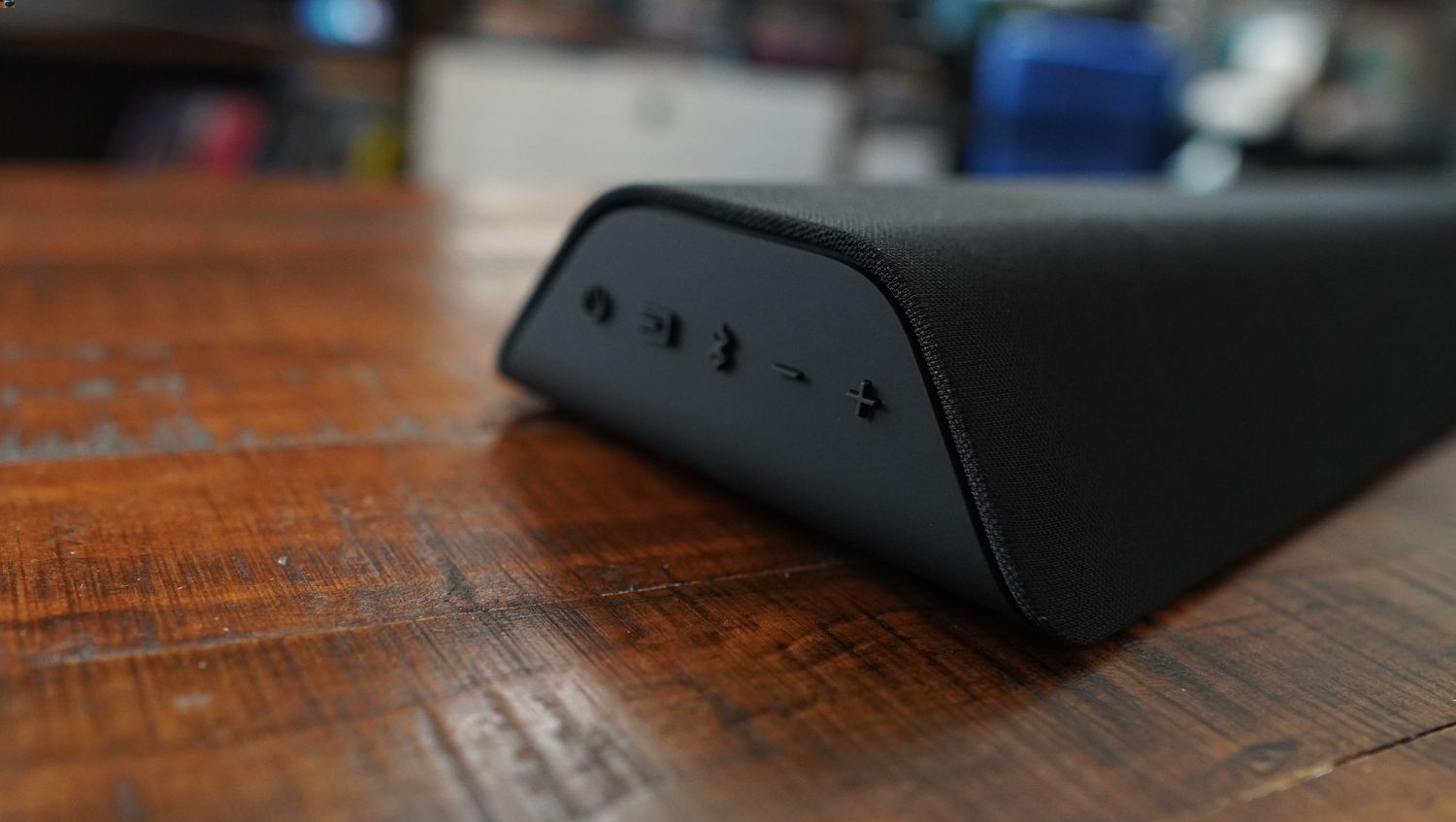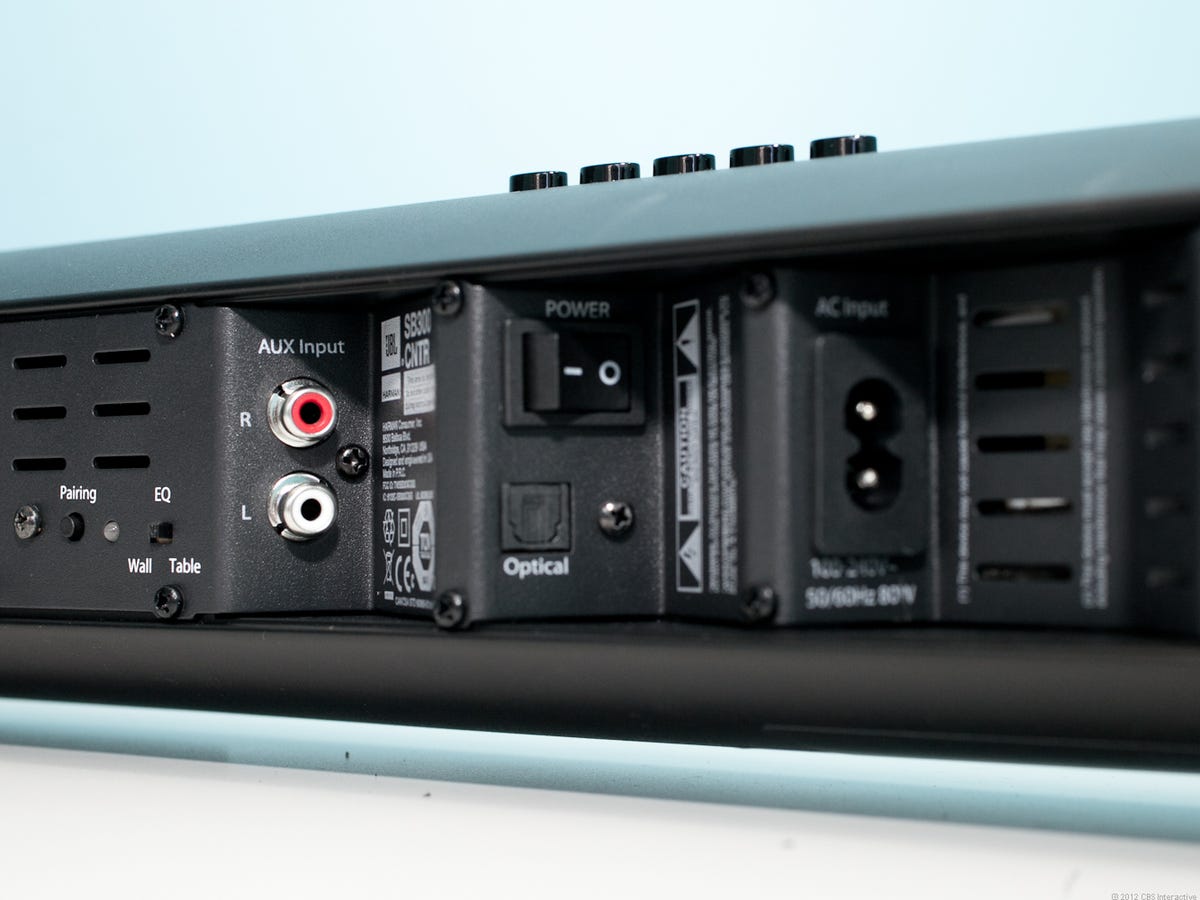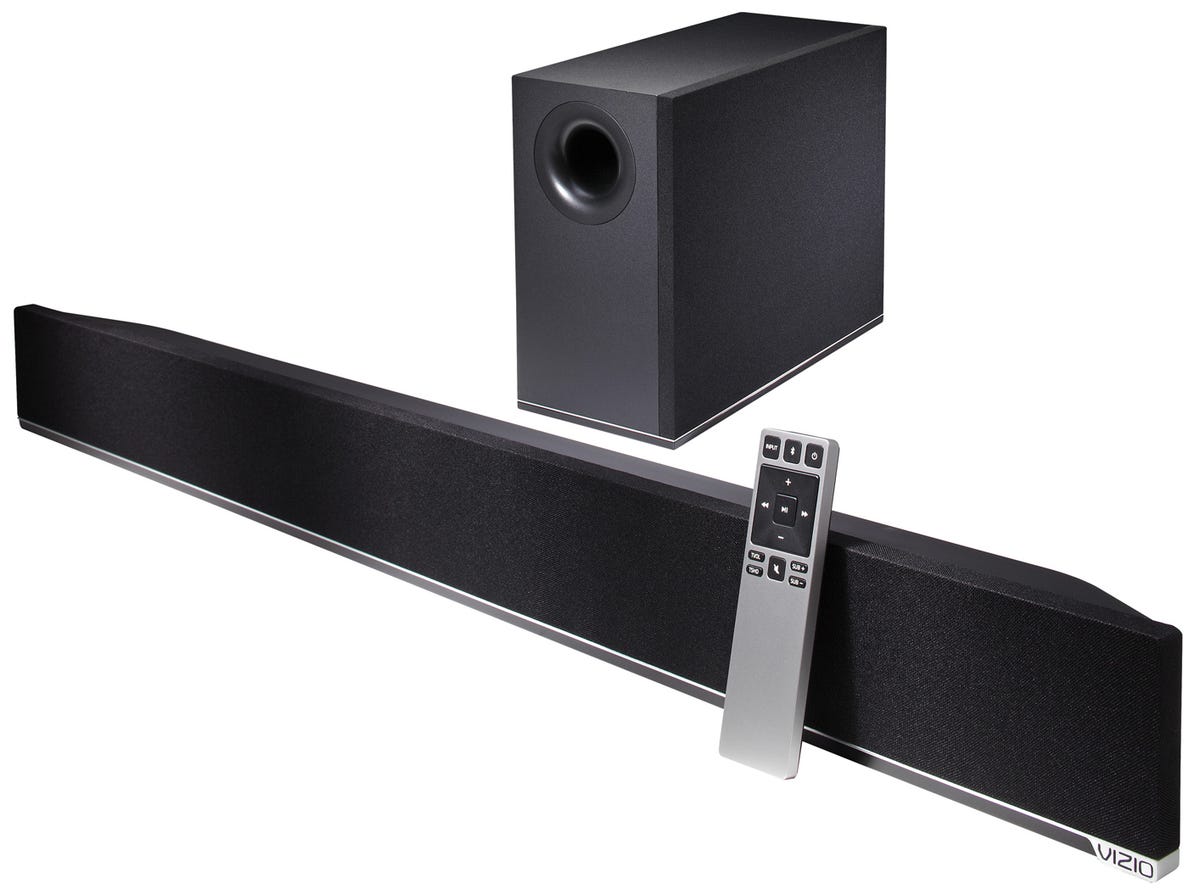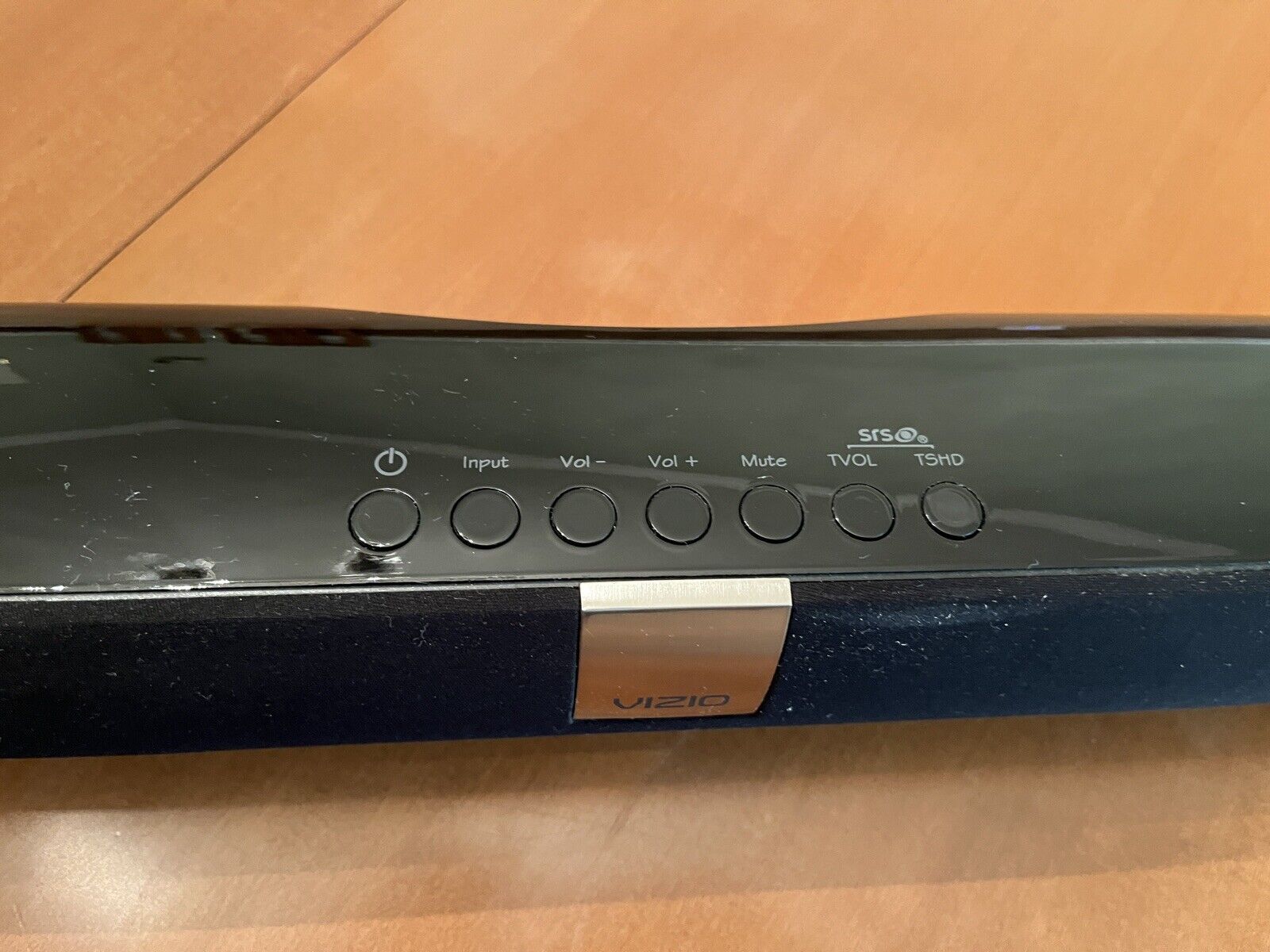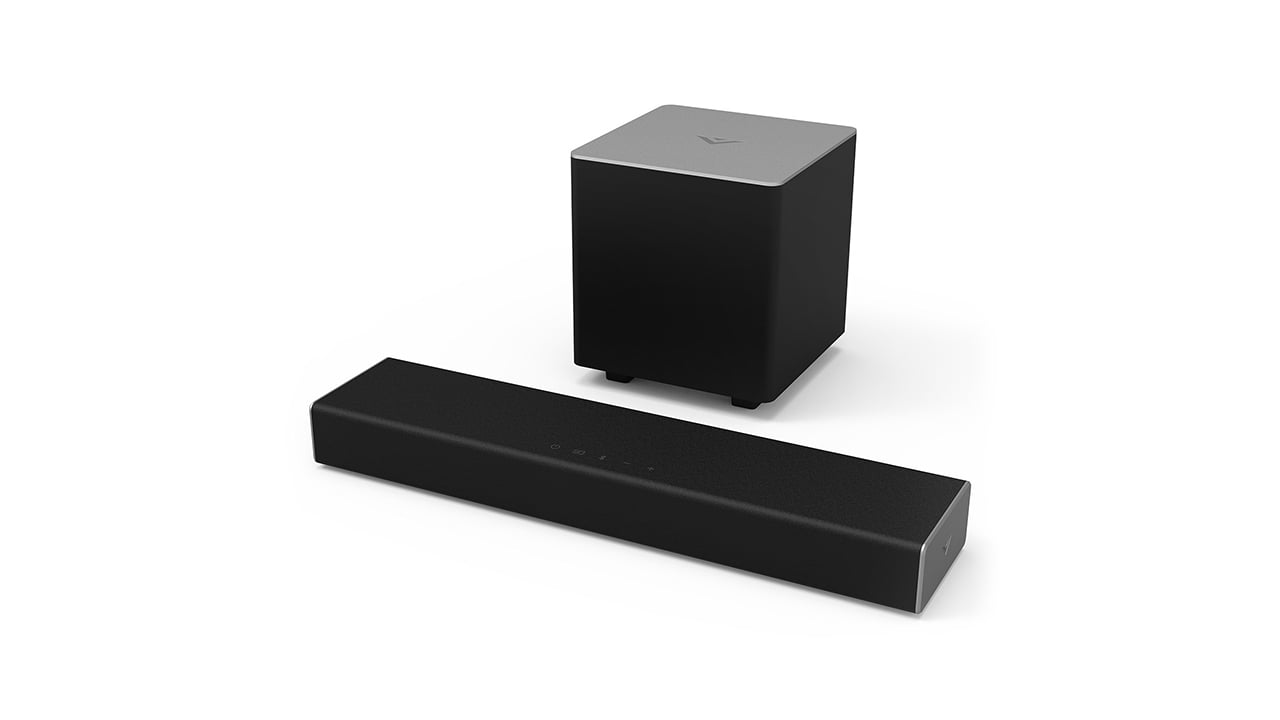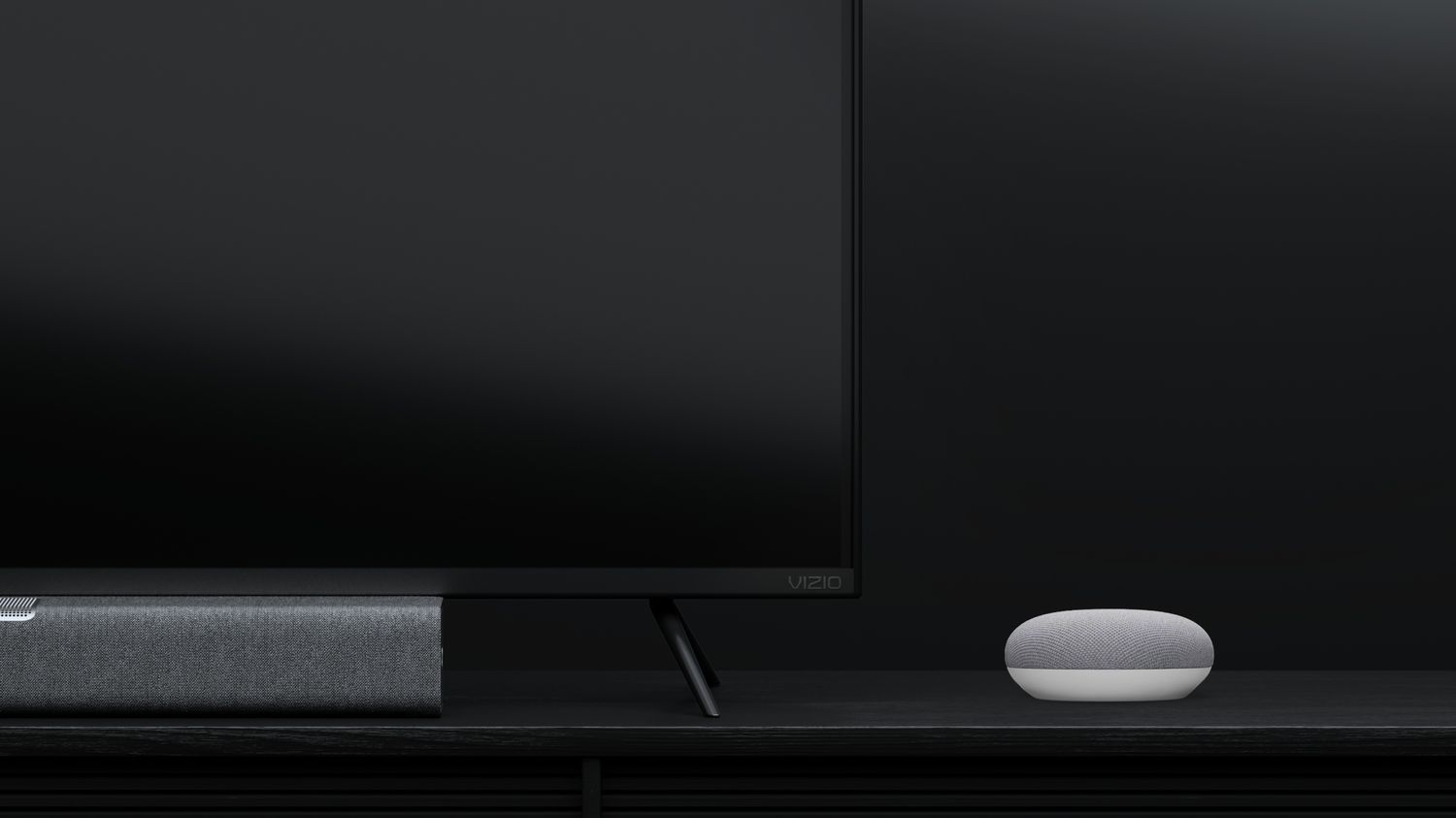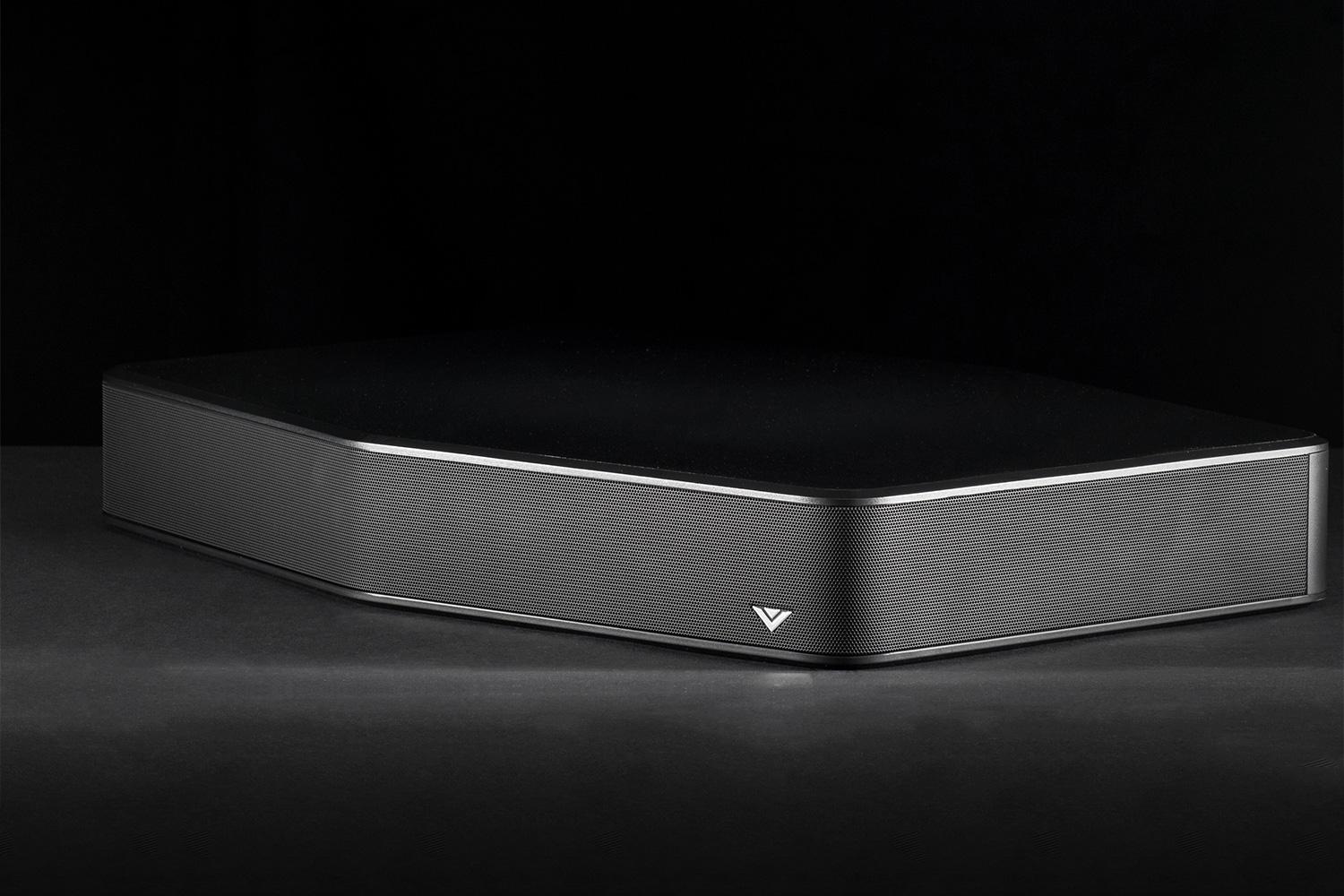Home>Production & Technology>Sound>How To Set Up A Vizio Sound Bar


Sound
How To Set Up A Vizio Sound Bar
Modified: January 22, 2024
Learn how to easily set up your Vizio Sound Bar and enhance your audio experience. Follow our step-by-step guide to achieve optimal sound quality and enjoy your favorite content.
(Many of the links in this article redirect to a specific reviewed product. Your purchase of these products through affiliate links helps to generate commission for AudioLover.com, at no extra cost. Learn more)
Table of Contents
Introduction
Welcome to this comprehensive guide on how to set up a Vizio Sound Bar. Vizio Sound Bars are a popular choice for enhancing the audio experience of your TV, providing immersive sound quality and a sleek design. Whether you’re a tech-savvy enthusiast or a casual user, this step-by-step guide will walk you through the process of setting up your Vizio Sound Bar, ensuring that you can enjoy your favorite movies, shows, and music with crystal-clear sound.
A Vizio Sound Bar is a compact audio system that connects to your television, enhancing the sound output and providing a cinematic experience in the comfort of your own home. This versatile device can be seamlessly integrated into your existing setup, whether you have a Vizio or any other brand of television. With various connectivity options, including Bluetooth and HDMI, the Vizio Sound Bar offers flexibility in connecting to your TV, mobile devices, and other audio sources.
In this guide, we will cover everything you need to know to set up your Vizio Sound Bar effectively. We will start with unboxing the sound bar and then guide you through connecting the power and establishing a connection with your TV. We will also discuss adjusting the sound settings to optimize the audio output based on your preferences. Additionally, we will explore how to pair your Vizio Sound Bar with Bluetooth devices for a wireless audio experience. For those looking to mount their sound bar on the wall, we will provide instructions for that as well.
Lastly, we will address some common troubleshooting issues that you may encounter during the setup process or while using your Vizio Sound Bar. By following this guide, you will be able to navigate through any challenges and enjoy the immersive audio experience that Vizio Sound Bars have to offer.
So, let’s dive in and get started on setting up your Vizio Sound Bar. Get ready to elevate your entertainment experience with superior sound quality!
Step 1: Unboxing the Vizio Sound Bar
Before you can set up your Vizio Sound Bar, you will need to unbox it and familiarize yourself with its components. The box should contain the following items:
- Vizio Sound Bar
- Remote control (with batteries, if included)
- Power cord
- Audio cables (such as HDMI or optical)
- Wall mounting brackets and screws (if applicable)
- User manual and setup guide
Once you have unboxed everything, carefully remove all the protective packaging materials from the sound bar and accessories. Make sure to keep the packaging in case you need to return or transport the sound bar in the future.
Next, position the sound bar where you plan to set it up. It is recommended to place it directly below or above your TV for optimal sound projection. The sound bar can be placed on a TV stand, mounted on a wall, or positioned on a shelf.
Before proceeding to the next steps, double-check that you have all the necessary components and that the sound bar is undamaged. If you notice any visible defects or missing parts, contact Vizio customer support for assistance.
Now that you have unboxed and inspected your Vizio Sound Bar, you are ready to move on to the next step: connecting the power.
Step 2: Connecting the Power
Now that you have unboxed your Vizio Sound Bar, it’s time to connect the power and ensure that it is ready to be used. Follow these steps to connect the power:
- Locate the power cord that came with your Vizio Sound Bar. It should have a plug on one end and a connector on the other.
- On the back of the sound bar, you will find the power input port. Insert the end of the power cord into this port.
- Plug the other end of the power cord into a power outlet.
- Make sure the power cord is securely plugged in on both ends and that the power outlet is functioning properly.
- Once the power is connected, locate the power button on the sound bar or the remote control and turn on the sound bar.
After turning on the sound bar, you should see a power indicator light on the front or top of the device, indicating that it is receiving power. If the power indicator does not light up, double-check the connection at both ends and ensure that the power outlet is working.
It is worth mentioning that some Vizio Sound Bars come with a built-in power supply, negating the need for a separate power cord. In this case, simply plug the sound bar directly into a power outlet.
Once you have successfully connected the power, you are ready to proceed to the next step: connecting the sound bar to your TV.
Step 3: Connecting to the TV
Now that you have connected the power to your Vizio Sound Bar, it’s time to establish a connection between the sound bar and your TV. There are several ways to connect the sound bar to your TV, depending on the available ports and your preferred method of connectivity. Here are the most common options:
- HDMI ARC: This is the recommended and preferred method of connecting your Vizio Sound Bar to your TV, as it provides a high-quality audio signal and simplifies the setup process. To connect using HDMI ARC, locate the HDMI ARC port on your TV and the HDMI ARC port on the sound bar. Connect one end of the HDMI cable to the TV’s HDMI ARC port and the other end to the sound bar’s HDMI ARC port. Once connected, ensure that your TV’s audio settings are configured to output audio through the HDMI ARC connection.
- Optical Cable: If your TV does not have an HDMI ARC port, you can use an optical cable to establish the connection. Locate the optical audio output port on your TV and the optical audio input port on the sound bar. Insert one end of the optical cable into the TV’s optical audio output port and the other end into the sound bar’s optical audio input port. Once connected, make sure to select the optical audio input on your sound bar and adjust the TV’s audio settings accordingly.
- Analog (3.5mm Auxiliary or RCA): If your TV lacks HDMI ARC and optical audio output, you can use the analog audio connections. For a 3.5mm auxiliary connection, locate the headphone jack on your TV and the corresponding input on the sound bar. Connect one end of the 3.5mm auxiliary cable to the TV’s headphone jack and the other end to the sound bar’s input. If your TV has RCA audio outputs, use an RCA-to-3.5mm adapter to connect the TV to the sound bar.
Remember to consult your TV’s user manual or manufacturer’s website for specific information on the available audio output options.
Once you have established the connection between your TV and the sound bar, turn on both devices and set the TV’s audio output to the connected audio source. You may need to adjust the sound bar’s input settings to correspond with the selected audio input.
With the sound bar successfully connected to your TV, you can now enjoy enhanced audio quality while watching your favorite content. However, if you want to optimize the sound further, proceed to the next step: adjusting the sound settings.
Step 4: Adjusting the Sound Settings
Once you have connected your Vizio Sound Bar to your TV, it’s important to adjust the sound settings to optimize the audio output according to your preferences. Vizio Sound Bars usually come with various sound modes and settings that allow you to fine-tune the audio experience. Here are the steps to adjust the sound settings:
- Use the remote control that came with your Vizio Sound Bar to access the sound settings. Look for a dedicated button labeled “Sound” or similar.
- On the sound menu, you will find different sound modes such as “Movie,” “Music,” “Sports,” and “Game.” These modes are specifically optimized for different types of content and provide varying audio profiles. Browse through the available options and select the one that best suits your current viewing or listening experience.
- Experiment with additional sound settings, such as bass and treble controls, to customize the audio output further. Adjust these settings based on your personal preference and the acoustic characteristics of your room.
- If your Vizio Sound Bar supports surround sound or virtual surround technology, enable it to enhance the immersive experience. This feature can create a more spacious and enveloping sound field, especially when watching movies or playing games.
- Some Vizio Sound Bars also offer the option to adjust the audio synchronization, which can be useful if you notice a delay between the sound and the video on your TV. Fine-tune this setting until you achieve perfect audio-video synchronization.
Don’t hesitate to refer to the sound bar’s user manual for specific instructions on accessing and adjusting the sound settings. Each model may have slightly different menus and options.
Remember to take your time and experiment with different sound settings to find the optimal configuration for your preferences and listening environment. It’s also a good idea to test the settings with various types of content—movies, music, sports—to ensure a well-rounded audio experience.
Now that you have adjusted the sound settings of your Vizio Sound Bar, you can enjoy an enhanced audio experience that perfectly complements your viewing or listening activities. If you want to take advantage of the wireless capabilities of your sound bar, continue to the next step: pairing with Bluetooth devices.
Step 5: Pairing with Bluetooth Devices
Vizio Sound Bars offer the convenience of wireless connectivity through Bluetooth, allowing you to pair and stream audio from compatible devices such as smartphones, tablets, and computers. Pairing your sound bar with Bluetooth devices is straightforward. Follow these steps:
- Ensure that the Bluetooth device you want to pair with the sound bar is within range and has Bluetooth enabled.
- On the sound bar’s remote control, press the Bluetooth button to activate the Bluetooth pairing mode. The sound bar’s Bluetooth indicator light should start flashing, indicating that it is ready to pair.
- On your Bluetooth device, open the settings or Bluetooth menu and search for available devices. Select the Vizio Sound Bar from the list of available devices.
- If prompted, enter the PIN code listed in the sound bar’s user manual or on the packaging. Not all sound bars require a PIN code, so refer to the specific instructions for your model.
- Once the pairing is successful, the sound bar will emit a sound or the Bluetooth indicator light will stop flashing and remain solid.
After pairing, you can play audio from your Bluetooth device through the Vizio Sound Bar. You can stream music from your smartphone, watch videos with synchronized sound from your tablet, or even play games with immersive audio using your computer.
It’s important to note that most Vizio Sound Bars support connecting multiple Bluetooth devices to easily switch between them. To switch devices, simply disconnect the current device’s Bluetooth connection and pair the desired device following the same steps mentioned above.
Now that you have successfully paired your Vizio Sound Bar with your Bluetooth device, you can enjoy the convenience of wireless audio streaming. If you prefer to mount your sound bar on the wall for a sleek and tidy setup, proceed to the next step: mounting the sound bar (optional).
Step 6: Mounting the Sound Bar (Optional)
If you prefer a clean and space-saving setup, you can choose to mount your Vizio Sound Bar on the wall. This step is entirely optional, and you can skip it if you prefer to keep your sound bar on a TV stand or shelf. However, if you decide to mount it, follow these steps:
- Ensure that you have the necessary mounting brackets and screws provided with your Vizio Sound Bar.
- Choose the desired location on the wall where you want to mount the sound bar. Make sure it is close to your TV and at a suitable height for optimal sound projection.
- Use a stud finder to locate the studs behind the wall. Mounting the sound bar on studs provides a secure and stable installation.
- Using a pencil, mark the positions on the wall where the mounting brackets will be installed. Double-check the measurements for accuracy.
- Attach the mounting brackets to the marked locations on the wall using the provided screws. Make sure they are securely fastened to the studs.
- Place the sound bar onto the mounted brackets, ensuring that it is level and aligned properly.
- Secure the sound bar to the mounting brackets using the screws provided. Ensure that it is firmly attached and does not wobble or move when lightly tapped.
It’s essential to follow the manufacturer’s instructions for mounting the sound bar properly. Each model may have slightly different mounting procedures, so consult the user manual for specific details.
Mounting your Vizio Sound Bar on the wall can help create a streamlined and elegant appearance, especially if you have a wall-mounted TV. It also provides the advantage of saving space and reducing clutter.
Lastly, if you encounter any issues during the mounting process or need further assistance, it’s recommended to consult the Vizio customer support or reach out to a professional installer for guidance.
With your Vizio Sound Bar now mounted on the wall (if applicable), you can enjoy the enhanced audio experience without taking up any additional space. However, if you encounter any difficulties or irregularities with your sound bar, continue to the next step: troubleshooting common issues.
Step 7: Troubleshooting Common Issues
While setting up and using your Vizio Sound Bar, you may encounter some common issues that can be easily resolved. Here are a few troubleshooting tips to help you address these problems:
- No Sound: If you’re not hearing any sound from your sound bar, check the volume level on both the sound bar and your TV. Ensure that the sound bar is selected as the audio output device on your TV’s settings. Also, make sure the audio cables are securely connected. If using Bluetooth, verify that the connected device’s volume is up and not set to silent.
- Audio Lag or Delay: If you notice a delay between the sound and the video, check if your TV has an audio delay or lip-sync adjustment feature. Adjust the setting until the audio and video synchronization is satisfactory. If using an HDMI connection, ensure that both your TV and sound bar support HDMI ARC for optimal audio synchronization.
- Poor Sound Quality: If you’re experiencing poor sound quality, try adjusting the sound settings on your sound bar. Tweaking bass and treble controls, as well as sound modes, can significantly enhance the audio output. Additionally, check the audio source to ensure that it’s not the cause of the issue.
- Bluetooth Connection Issues: If you’re having trouble pairing your sound bar with a Bluetooth device, make sure the device is within range and has Bluetooth enabled. Restart both the sound bar and the Bluetooth device and try pairing again. If the issue persists, check for any interference from other Bluetooth devices or Wi-Fi signals in the vicinity.
- Remote Control Problems: If your sound bar’s remote control is not functioning properly, ensure that the batteries are inserted correctly and have sufficient power. If the remote control still doesn’t work, try resetting it by removing and reinserting the batteries. Additionally, make sure there are no obstructions between the remote control and the sound bar’s receiver.
If these troubleshooting tips do not resolve your issue or if you encounter any other problems, it’s recommended to consult the Vizio website or reach out to their customer support for further assistance. They can provide more specific troubleshooting steps based on your sound bar model and the nature of the issue.
By following these troubleshooting tips, you can overcome common issues that may arise while setting up or using your Vizio Sound Bar. Now that you have the knowledge to troubleshoot, you can enjoy uninterrupted and immersive sound quality.
Congratulations on successfully setting up your Vizio Sound Bar and troubleshooting any potential issues along the way! You are now ready to enjoy an enhanced audio experience with your favorite movies, shows, and music.
Conclusion
Congratulations! You have successfully set up your Vizio Sound Bar and are now ready to enjoy an immersive audio experience. Through this comprehensive guide, we have covered the essential steps of unboxing the sound bar, connecting the power, establishing a connection with your TV, adjusting the sound settings, pairing with Bluetooth devices, and even mounting the sound bar on the wall. We have also provided troubleshooting tips to help you overcome any common issues that may arise during the setup process.
Your Vizio Sound Bar offers a versatile and convenient solution for enhancing the audio output of your TV. Whether you’re watching movies, listening to music, or playing games, the sound bar’s high-quality sound and various sound modes ensure an optimized audio experience tailored to your preferences.
Remember to consult the user manual and the manufacturer’s instructions for specific details regarding your sound bar model. The user manual provides valuable information on additional features and settings that can further enhance your audio enjoyment.
Should you encounter any difficulties or have questions that are not addressed in this guide, make sure to visit the Vizio website or reach out to their customer support for further assistance. They have a dedicated team of experts ready to help you resolve any issues or provide additional guidance.
Now, sit back, relax, and immerse yourself in the rich and captivating sound that your Vizio Sound Bar delivers. Enjoy the enhanced audio quality and make every listening experience a memorable one.
Thank you for choosing Vizio and for taking the time to follow this guide. We hope it has provided you with the knowledge and confidence to make the most of your Vizio Sound Bar. Happy listening!

